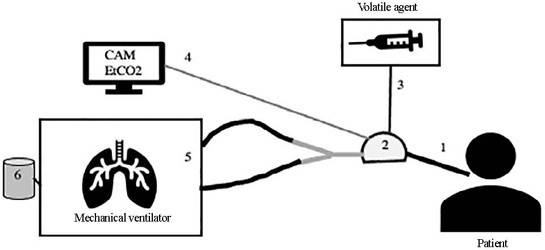
Since December 2019, when the first cases were described in China, the coronavirus disease 2019 (COVID-19) pandemic has impacted health systems around the world. A significant number of patients have the severe form of the disease, requiring admission to the intensive care unit (ICU).() The shortage of beds, equipment and drugs represented an even greater challenge in the management of these patients. The improvised use of operating rooms, which served as ICU beds, and the use of anesthesia equipment for sedation and mechanical ventilation have been described and were employed as heroic measures in the management of these patients.(, , ) In this context, the use of volatile anesthetics (VAs) has reappeared as an option for the sedation of critically ill patients.()
The use of VAs in the ICU has been described for more than 2 decades and is mainly used in Europe and Canada;() however, the equipment to administer VAs was only recently approved for use in Brazil. The main VAs used as sedatives in the ICU are sevoflurane and isoflurane. The development of equipment with compact vaporizers adapted for mechanical ventilators in ICUs made it possible to use these agents as an option for sedation. Among the main advantages of using VAs rather than opioids in critically ill patients are earlier awakening, lower use of opioids and shorter time on mechanical ventilation. Other reported benefits of VAs are bronchodilator effects and improved oxygenation, especially in patients with acute respiratory distress syndrome (ARDS). Among the contraindications and limitations of VAs are a personal or family history of malignant hyperthermia, suspected or confirmed intracranial hypertension, severe hemodynamic instability and significant pulmonary secretion with the need for frequent aspiration due to the risk of system obstruction.()
[…]
Search
Search in:


Comments